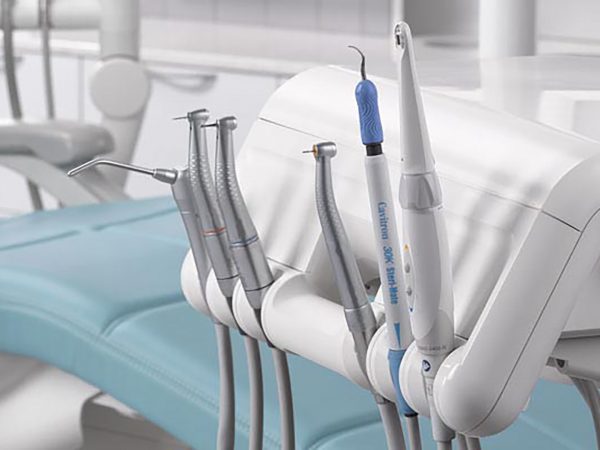
In the fast-paced world of dentistry, reliable and well-maintained equipment is essential for delivering high-quality patient care. Proper maintenance not only ensures the longevity of dental tools but also contributes to optimal performance and patient safety. In this guide, we explore practical tips and best practices for maintaining and servicing dental equipment, empowering dental professionals to extend the lifespan of their tools and maximise practice efficiency.
- Regular Cleaning and Disinfection: Routine cleaning and disinfection are paramount for preventing the build-up of debris, biofilm, and microbial contamination on dental equipment. After each use, thoroughly clean instruments and devices using manufacturer-recommended cleaning solutions and techniques. Pay special attention to intricate components and hard-to-reach areas to ensure thorough disinfection. Additionally, establish protocols for periodic deep cleaning and sterilisation of reusable instruments to maintain infection control standards and promote patient safety.
- Inspect for Wear and Damage: Regular inspections are critical for identifying signs of wear, damage, or malfunction in dental equipment. Conduct visual inspections of instruments, handpieces, and machinery before each use, paying attention to signs of corrosion, rust, loose components, or abnormal wear patterns. Schedule routine maintenance checks and calibration services with qualified technicians to identify and address potential issues before they escalate into costly repairs or equipment failures.
- Lubrication and Oiling: Proper lubrication is essential for preserving the functionality and longevity of dental handpieces and rotary instruments. Follow manufacturer guidelines for lubricating handpieces and attachments using compatible lubricants at recommended intervals. Avoid over-lubrication, as excess lubricant can attract contaminants and compromise instrument performance. Regularly inspect handpiece turbines for signs of wear and replace worn components promptly to prevent premature failure.
- Calibration and Calibration: Regular calibration ensures the accuracy and reliability of dental equipment, such as digital radiography systems, intraoral cameras, and electronic devices. Schedule annual calibration services with certified technicians to verify the precision of equipment measurements, imaging quality, and software performance. Calibrate instruments according to manufacturer specifications and industry standards to maintain diagnostic accuracy and ensure compliance with regulatory requirements.
- Environmental Control: Optimal environmental conditions are essential for preserving the integrity and performance of dental equipment. Store instruments and devices in a clean, dry environment away from direct sunlight, moisture, and extreme temperatures. Implement measures to control humidity levels and prevent condensation build-up, which can lead to corrosion and damage to sensitive electronic components. Invest in appropriate storage solutions, such as instrument cassettes, trays, and protective cases, to minimise the risk of contamination and mechanical stress during transport and storage.
- Training and Education: Invest in ongoing training and education for dental staff to ensure proficiency in equipment operation, maintenance, and troubleshooting. Provide comprehensive training sessions on proper instrument handling, care protocols, and infection control practices to minimise the risk of damage or misuse. Encourage staff members to stay informed about the latest advancements in dental technology and equipment maintenance through continuing education courses, workshops, and professional development opportunities.
- Documentation and Record Keeping: Maintain detailed records of equipment maintenance, servicing, and repairs to track maintenance schedules, identify trends, and ensure regulatory compliance. Establish a comprehensive maintenance log for each dental equipment, documenting inspection dates, service records, calibration results, and any corrective actions taken. Use digital management systems or software solutions to streamline record-keeping processes and facilitate easy access to historical data for auditing, reporting, and quality assurance purposes.
Effective maintenance and servicing of dental equipment are essential for ensuring optimal performance, longevity, and patient safety in dental practices.
By implementing practical tips and best practices outlined in this guide, dental professionals can proactively manage equipment maintenance, mitigate the risk of malfunctions or breakdowns, and optimise practice efficiency.
Dental Depot supports dental practices with high-quality equipment, supplies, and maintenance services, empowering practitioners to deliver exceptional patient care and achieve clinical excellence.



